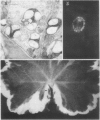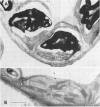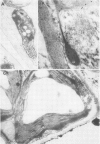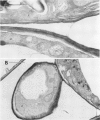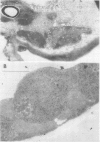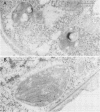Abstract
Two immunological approaches were used to determine if ribulose bisphosphate carboxylase oxygenase (RuBisCo) is present in guard cell chloroplasts. Immunocytochemistry on thin plastic sections using tissue samples that were processed using traditional glutaraldehyde/osmium fixation and then restored to antigenicity with metaperiodate treatment, resulted in labeling over wild-type mesophyll and guard cell plastids of several green and white variegated Pelargonium chimeras. The density of immunogold labeling in guard cell chloroplasts was only about one-seventh of that noted in mesophyll chloroplasts on a square micron basis. Because guard cell chloroplasts are much smaller than mesophyll chloroplasts, and occur at lower quantities/cell, the relative differences in RuBisCo concentration between the cell types indicate that guard cells have only 0.48% of the RuBisCo of mesophyll cells. No reaction was noted over 70S ribosomeless plastids of these chimeras even though adjacent green chloroplasts were heavily stained, indicating the high specificity of the reaction for RuBisCo. Spurr's resin gave the most successful colloidal gold labeling in terms of low background staining and structural detail but L. R. White's resin appeared to be superior for antigen retention. In the white leaf edges of the white and green Pelargonium chimeras, the only green, functional chloroplasts are in the guard cells. When either whole tissue or plastid enriched extracts from this white tissue were electrophoresed, blotted, and probed with anti-RuBisCo a large subunit band was detected, identical to that in the green tissue. These data indicate that a low, but detectable, level of RuBisCo is present in guard cell chloroplasts.
Full text
PDF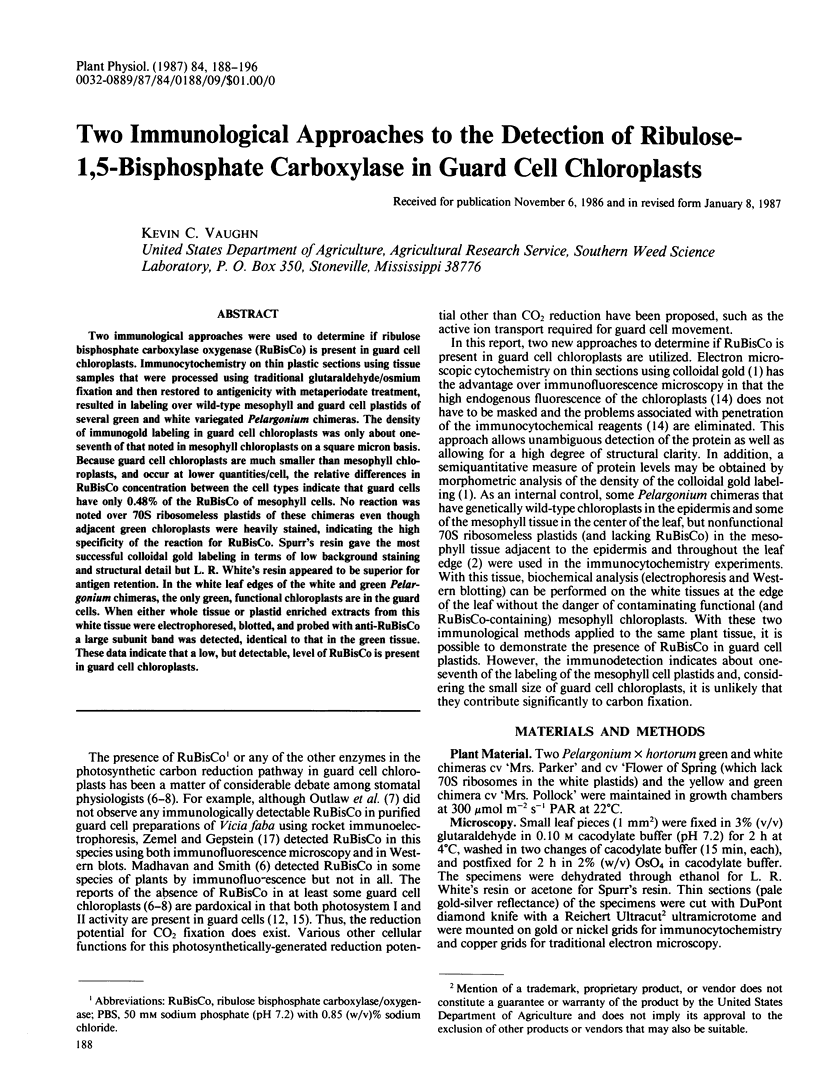
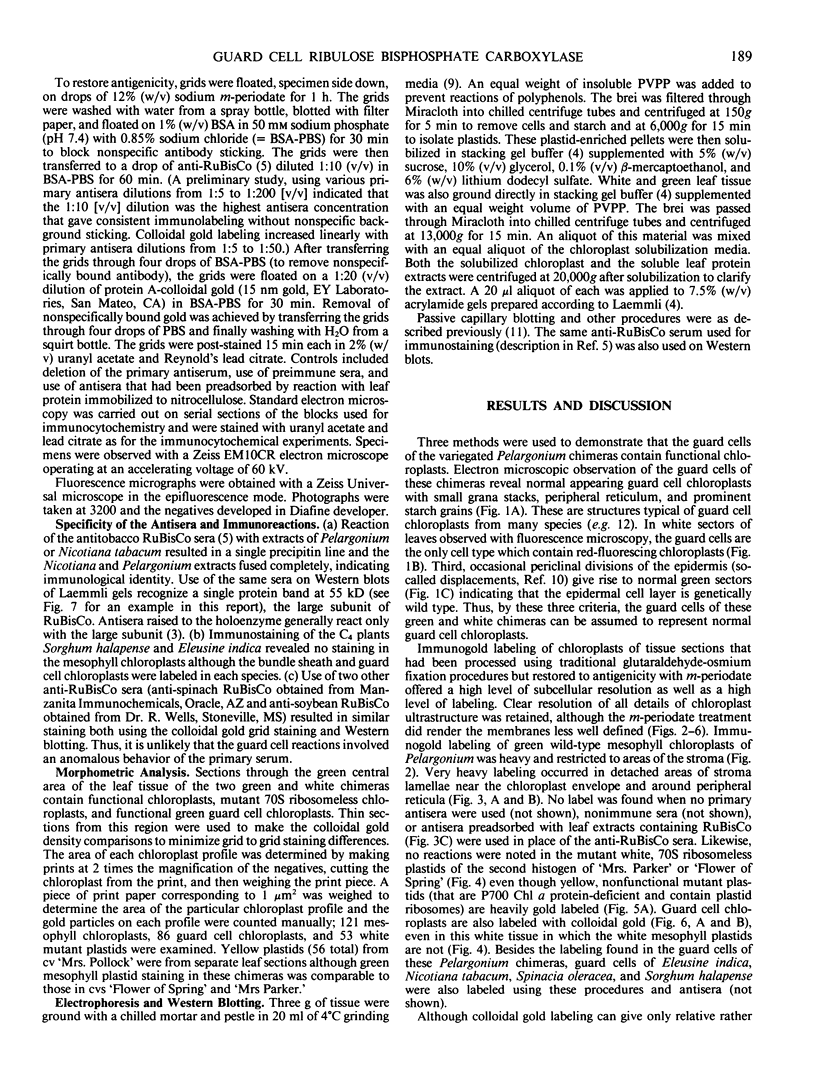
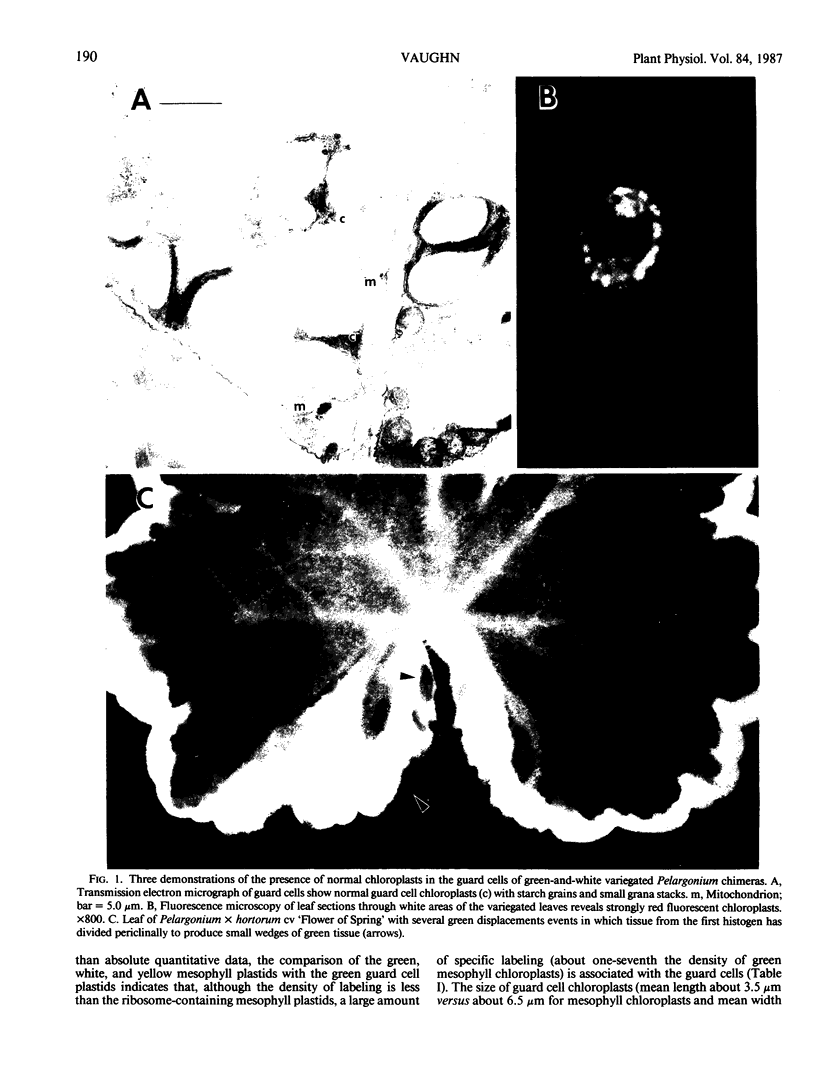
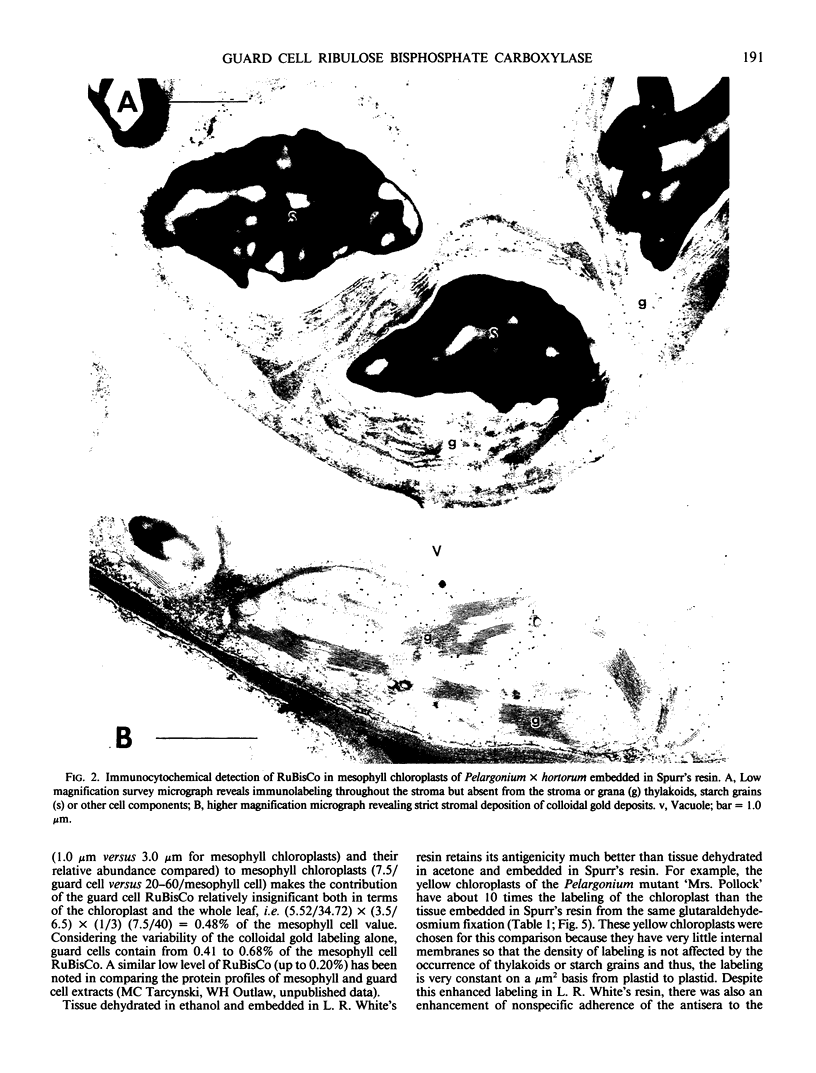
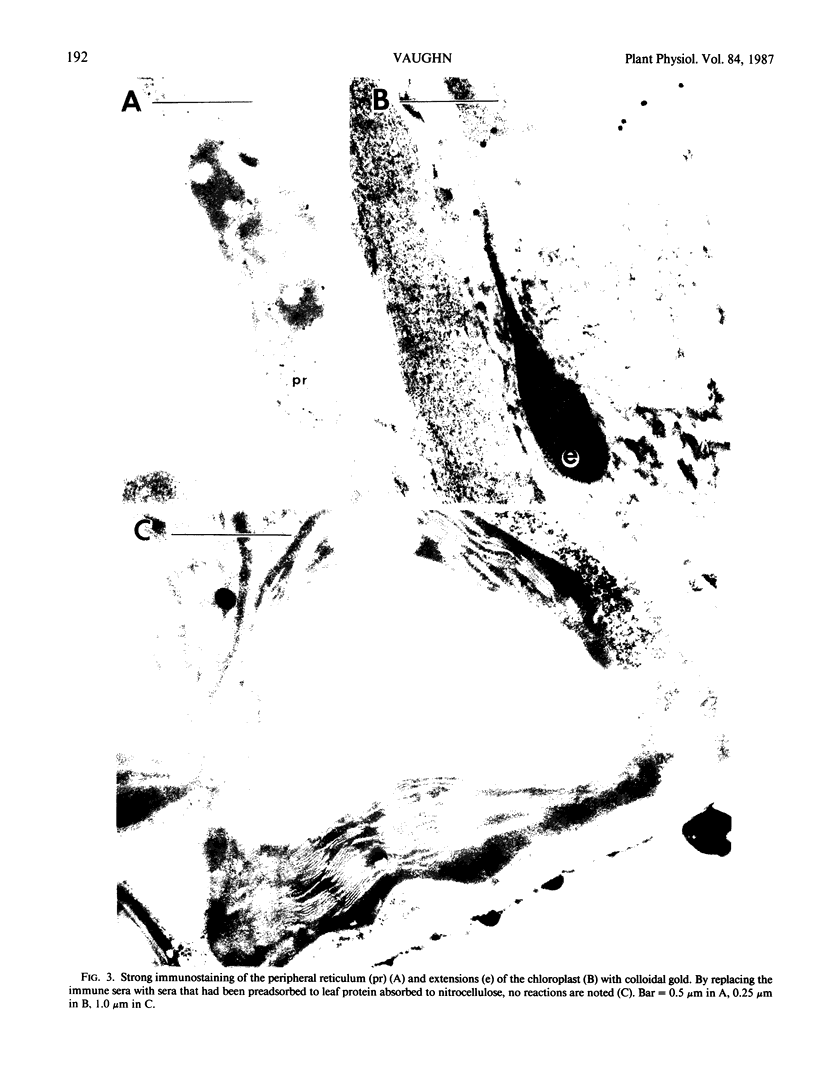
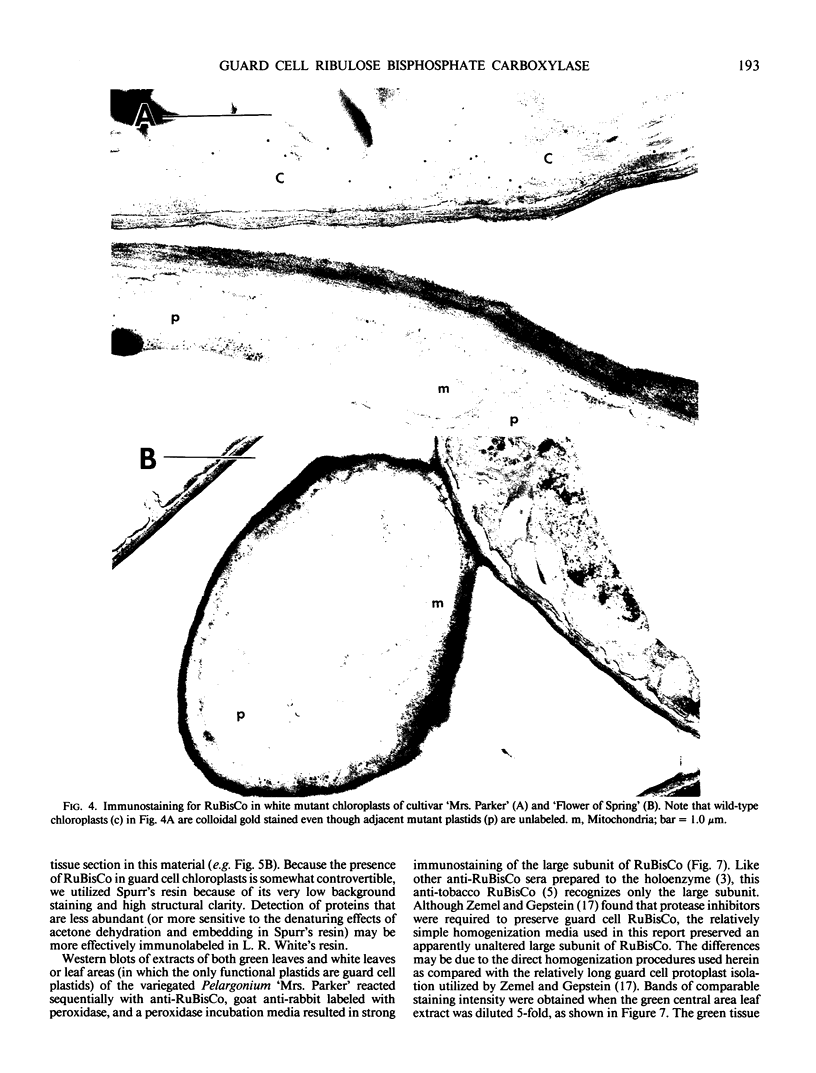
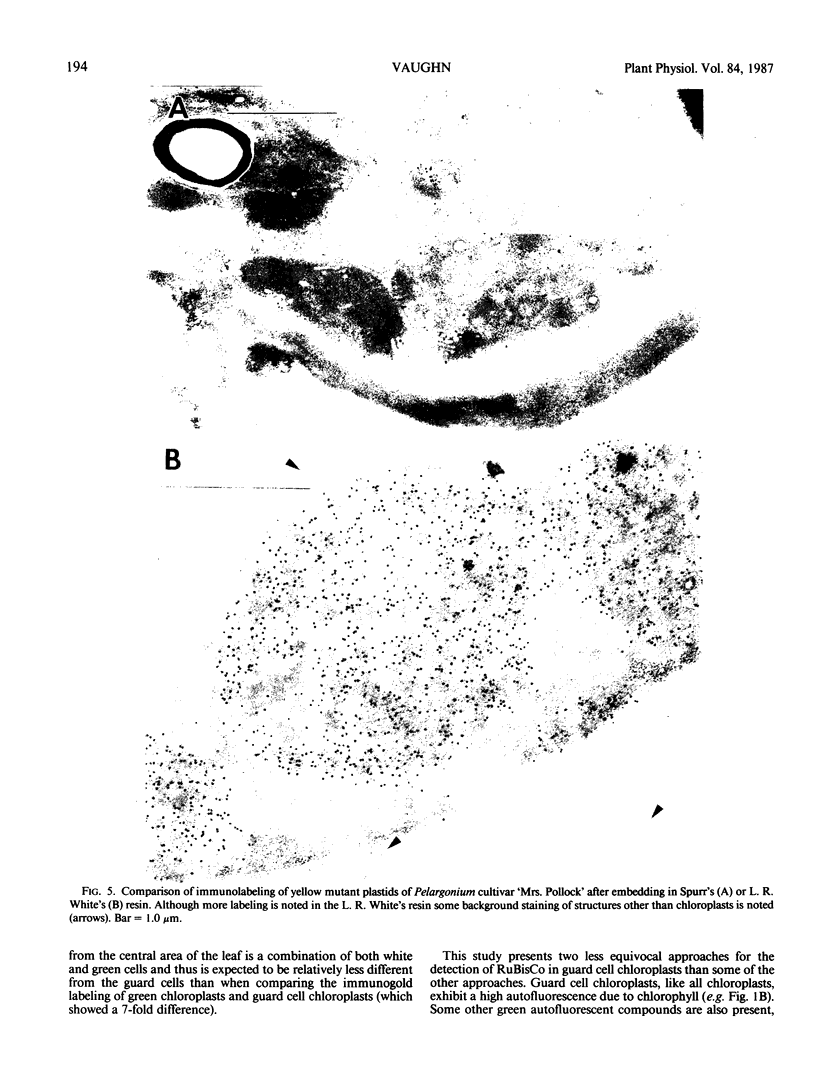
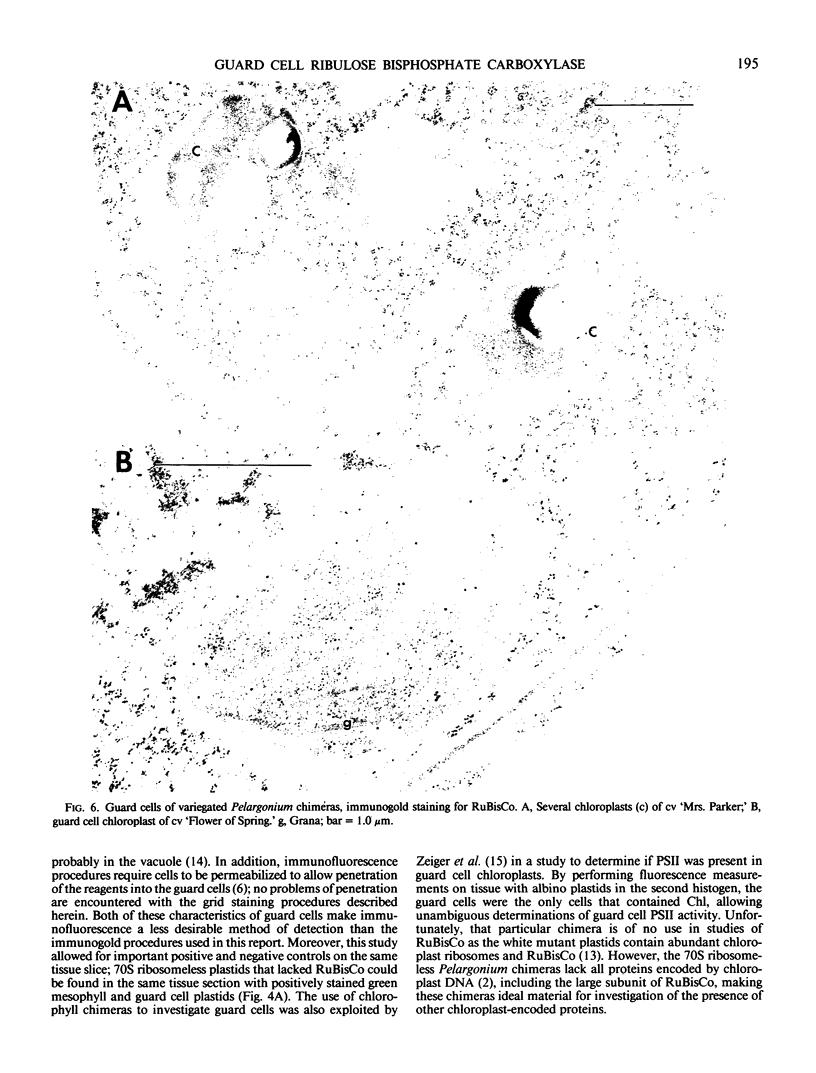
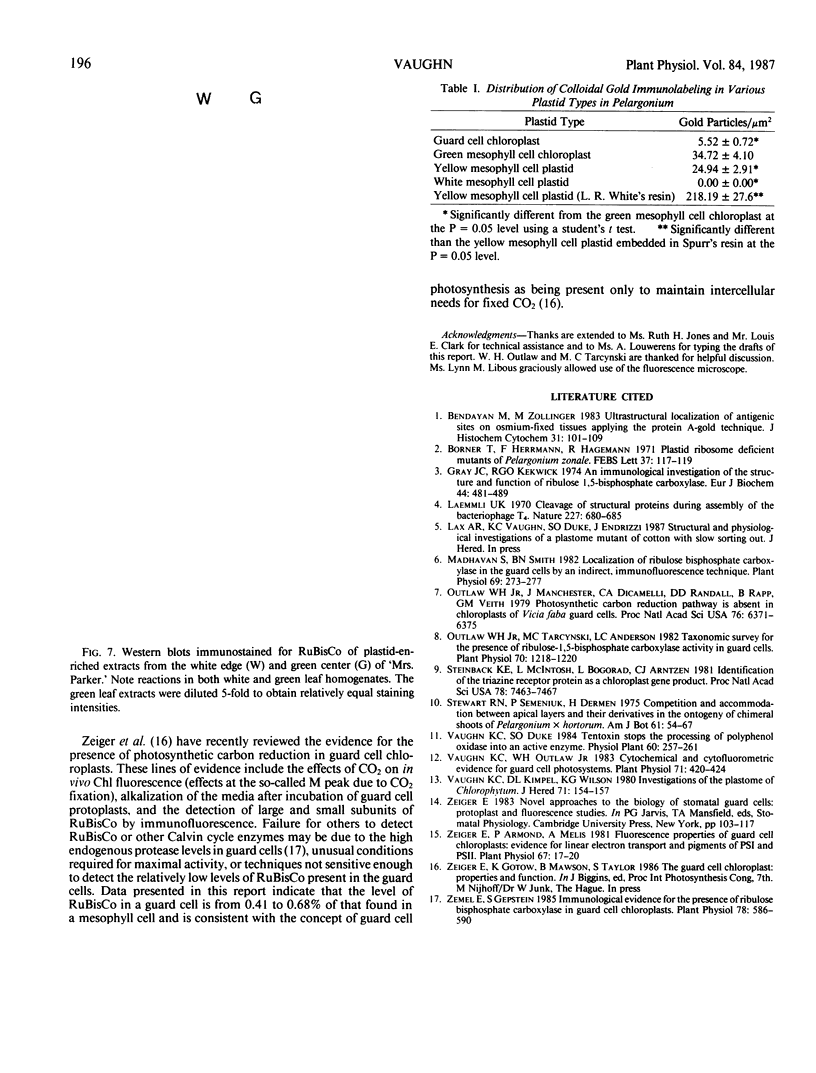
Images in this article
Selected References
These references are in PubMed. This may not be the complete list of references from this article.
- Bendayan M., Zollinger M. Ultrastructural localization of antigenic sites on osmium-fixed tissues applying the protein A-gold technique. J Histochem Cytochem. 1983 Jan;31(1):101–109. doi: 10.1177/31.1.6187796. [DOI] [PubMed] [Google Scholar]
- Börner T., Herrmann F., Hagemann R. Plastid ribosome deficient mutants of Pelargonium zonale. FEBS Lett. 1973 Dec 1;37(2):117–119. doi: 10.1016/0014-5793(73)80438-7. [DOI] [PubMed] [Google Scholar]
- Gray J. C., Kerwick R. G. An immunological investigation of the structure and function of ribulose 1,5-bisphosphate carboxylase. Eur J Biochem. 1974 May 15;44(2):481–489. doi: 10.1111/j.1432-1033.1974.tb03506.x. [DOI] [PubMed] [Google Scholar]
- Laemmli U. K. Cleavage of structural proteins during the assembly of the head of bacteriophage T4. Nature. 1970 Aug 15;227(5259):680–685. doi: 10.1038/227680a0. [DOI] [PubMed] [Google Scholar]
- Madhavan S., Smith B. N. Localization of ribulose bisphosphate carboxylase in the guard cells by an indirect, immunofluorescence technique. Plant Physiol. 1982 Jan;69(1):273–277. doi: 10.1104/pp.69.1.273. [DOI] [PMC free article] [PubMed] [Google Scholar]
- Outlaw W. H., Manchester J., Dicamelli C. A., Randall D. D., Rapp B., Veith G. M. Photosynthetic carbon reduction pathway is absent in chloroplasts of Vicia faba guard cells. Proc Natl Acad Sci U S A. 1979 Dec;76(12):6371–6375. doi: 10.1073/pnas.76.12.6371. [DOI] [PMC free article] [PubMed] [Google Scholar]
- Outlaw W. H., Tarczynski M. C., Anderson L. C. Taxonomic survey for the presence of ribulose-1,5-bisphosphate carboxylase activity in guard cells. Plant Physiol. 1982 Oct;70(4):1218–1220. doi: 10.1104/pp.70.4.1218. [DOI] [PMC free article] [PubMed] [Google Scholar]
- Steinback K. E., McIntosh L., Bogorad L., Arntzen C. J. Identification of the triazine receptor protein as a chloroplast gene product. Proc Natl Acad Sci U S A. 1981 Dec;78(12):7463–7467. doi: 10.1073/pnas.78.12.7463. [DOI] [PMC free article] [PubMed] [Google Scholar]
- Vaughn K. C., Outlaw W. H. Cytochemical and cytofluorometric evidence for guard cell photosystems. Plant Physiol. 1983 Feb;71(2):420–424. doi: 10.1104/pp.71.2.420. [DOI] [PMC free article] [PubMed] [Google Scholar]
- Zeiger E., Armond P., Melis A. Fluorescence Properties of Guard Cell Chloroplasts: EVIDENCE FOR LINEAR ELECTRON TRANSPORT AND LIGHT-HARVESTING PIGMENTS OF PHOTOSYSTEMS I AND II. Plant Physiol. 1981 Jan;67(1):17–20. doi: 10.1104/pp.67.1.17. [DOI] [PMC free article] [PubMed] [Google Scholar]
- Zemel E., Gepstein S. Immunological evidence for the presence of ribulose bisphosphate carboxylase in guard cell chloroplasts. Plant Physiol. 1985 Jul;78(3):586–590. doi: 10.1104/pp.78.3.586. [DOI] [PMC free article] [PubMed] [Google Scholar]



